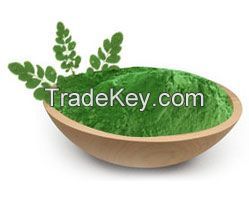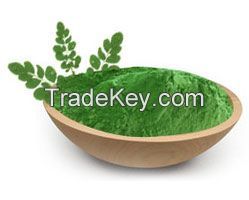Description
Moringa is a plant that is native to the sub-Himalayan areas of
India, Pakistan, Bangladesh, and Afghanistan. It is also grown in
the tropics. The leaves, bark, flowers, fruit, seeds, and root are
used to make medicine.
Moringa is used for tired blood (anemia); arthritis and other joint
pain (rheumatism); asthma; cancer; constipation; diabetes;
diarrhea; epilepsy; stomach pain; stomach and intestinal ulcers;
intestinal spasms; headache; heart problems; high blood pressure;
kidney stones; fluid retention; thyroid disorders; and bacterial,
fungal, viral, and parasitic infections.
Moringa is also used to reduce swelling, increase sex drive (as an
aphrodisiac), prevent pregnancy, boost the immune system, and
increase breast milk production. Some people use it as a
nutritional supplement or tonic.
Moringa is sometimes applied directly to the skin as a germ-killer
or drying agent (astringent). It is also used topically for
treating pockets of infection (abscesses), athletes foot, dandruff,
gum disease (gingivitis), snakebites, warts, and wounds.
Oil from moringa seeds is used in foods, perfume, and hair care
products, and as a machine lubricant.
Moringa is an important food source in some parts of the world.
Because it can be grown cheaply and easily, and the leaves retain
lots of vitamins and minerals when dried, moringa is used in India
and Africa in feeding programs to fight malnutrition. The immature
green pods (drumsticks) are prepared similarly to green beans,
while the seeds are removed from more mature pods and cooked like
peas or roasted like nuts. The leaves are cooked and used like
spinach, and they are also dried and powdered for use as a
condiment.
The seed cake remaining after oil extraction is used as a
fertilizer and also to purify well water and to remove salt from
seawater.
How does it work?
Moringa contains proteins, vitamins, and minerals. As an
antioxidant, it seems to help protect cells from damage.


